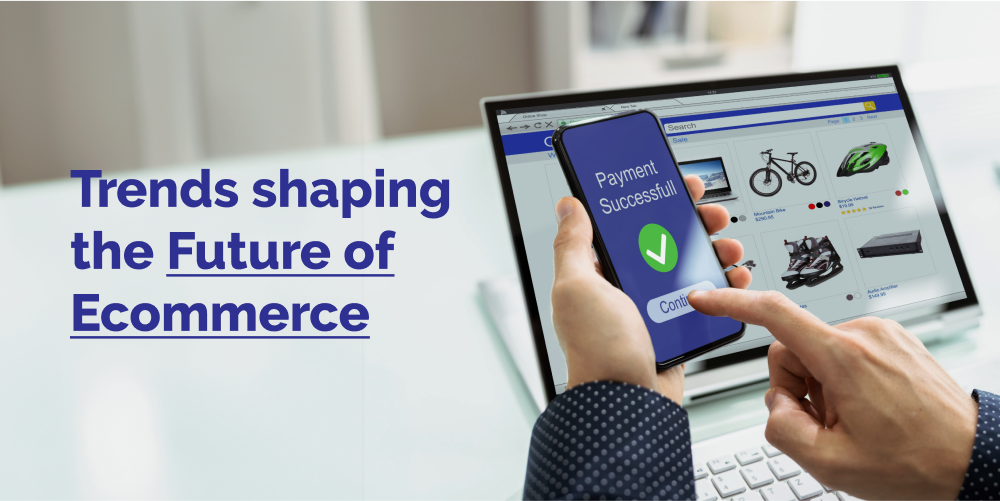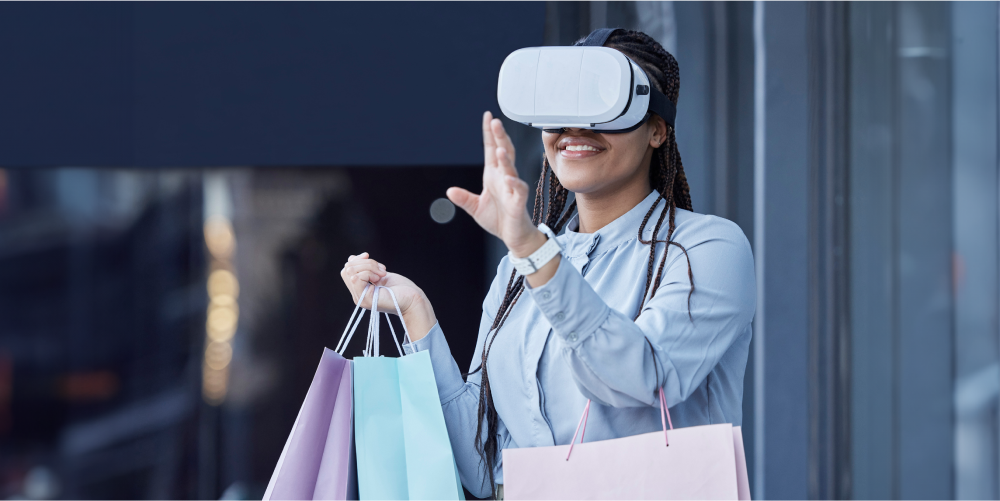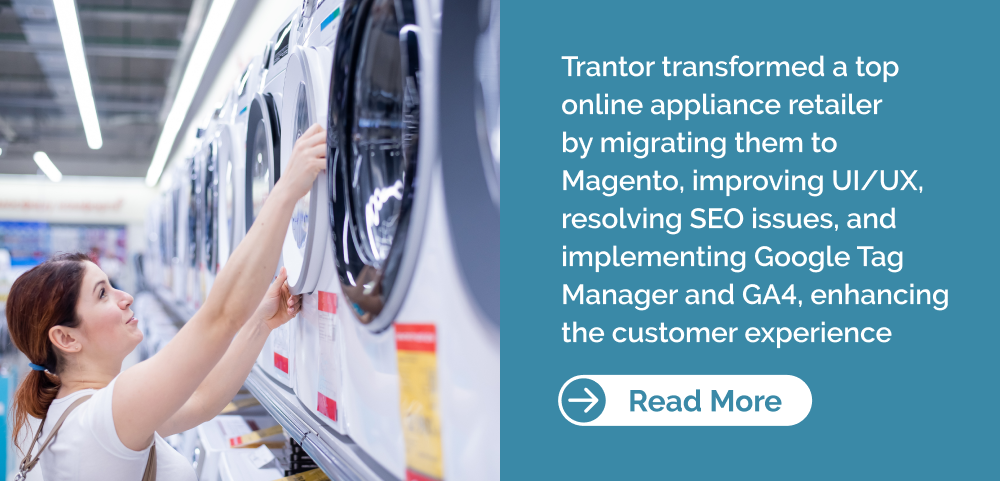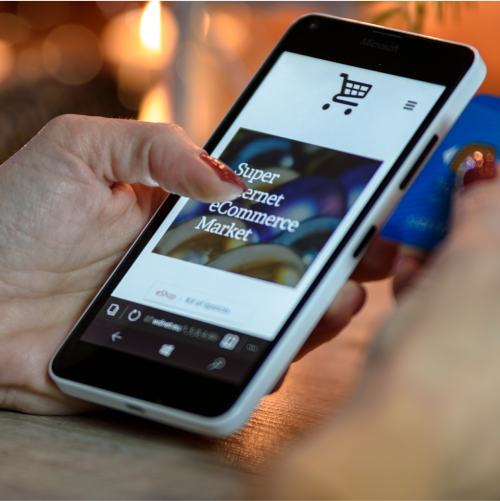Ecommerce Development, zBlog
The Future of E-commerce: 11 Trends Shaping 2024 and Beyond
trantorindia | Updated: September 22, 2023

Introduction
The world of e-commerce is ever-evolving, and staying ahead of the curve is essential for businesses looking to thrive in the digital marketplace. In 2024, we can expect several key trends to make a significant impact on the future of e-commerce landscape. These trends, driven by consumer demands and technological advancements, will reshape the way businesses sell and consumers shop online. In this comprehensive guide, we will explore each of these 11 e-commerce trends in detail and provide insights, strategies, and real-world examples to help businesses adapt and succeed in the changing e-commerce landscape.
Trend 1: Direct-to-Consumer (D2C) Selling
The rise of Direct-to-Consumer (D2C) e-commerce represents a significant shift in how brands reach and engage with consumers. D2C allows companies to sell their products directly to customers online, bypassing traditional intermediaries. This trend offers several advantages, including higher profit margins, greater control over the brand experience, and access to valuable first-party data for personalization and marketing.
Case Study: Casper: Revolutionizing Mattress Shopping
One standout example of D2C’s success is Casper, a digital mattress brand that disrupted the traditional furniture shopping model. Casper’s online-first approach and innovative marketing strategies helped them generate over $740 million in D2C sales by 2020. Their success illustrates the potential of cutting out middlemen and connecting directly with consumers.
By 2025, eMarketer predicts that the D2C e-commerce market will reach $18 billion as startups and established brands alike continue to embrace this model. To leverage this trend, businesses should focus on building a strong online presence, optimizing their e-commerce platforms, and using data-driven insights to personalize the customer experience.
Trend 2: Social Commerce Ascends

Social commerce has emerged as a powerful sales channel, with platforms like Instagram and TikTok leading the way. These social networks are transforming into indispensable platforms for online shopping thanks to features like shoppable posts, virtual stores, and integrated checkout options.
Case Study: Sephora: Boosting Revenue Through Social Shopping
Sephora, a global leader in cosmetics and beauty products, achieved remarkable success by embracing social shopping on Instagram. By leveraging Instagram storefronts, Sephora created a seamless shopping experience within the app, resulting in a 2X increase in app revenue. This case highlights the potential of social commerce to drive sales and engage consumers directly on their preferred social media platforms.
As the barriers to entry for social commerce continue to lower, more brands are expected to adopt this trend in 2024. To succeed in social commerce, businesses should focus on creating engaging and visually appealing content, leveraging influencers and user-generated content, and optimizing their social commerce strategies.
Trend 3: Voice Commerce and Search
Voice commerce, driven by voice-activated virtual assistants like Alexa and Google Assistant, is gaining traction as consumers seek more convenient ways to make purchases. In 2024, it’s projected that 20% of US households will expect to make voice-activated purchases, marking a 55% increase from 2021.
Case Study: Domino’s Pizza: Transforming Ordering with Voice
Domino’s Pizza is a prime example of a brand that successfully implemented voice commerce. By allowing customers to place orders using voice commands, Domino’s saw its voice-activated orders grow from 10% to over 30%. This demonstrates the potential of voice commerce to streamline the ordering process and enhance convenience for customers.
To tap into the voice commerce trend, businesses should explore voice-enabled shopping options, ensure their products are voice-search optimized, and provide a frictionless voice-activated shopping experience.
Trend 4: Live Video and Livestream Shopping

Live video shopping, a format that allows influencers and brands to showcase products in real-time across social and e-commerce platforms, has seen explosive growth, particularly in China. This trend is expected to continue its global expansion in 2024.
Case Study: Estée Lauder: The Power of Live Shopping
Estée Lauder, a renowned cosmetics brand, leveraged live shopping on TikTok to great success. During a live shopping event, Estée Lauder drew 1.7 million views and sold out its products in a matter of minutes. This exemplifies the authenticity and urgency that live video shopping can create, particularly among Gen Z and Millennial audiences.
Livestream shopping sales are projected to reach $25 billion in the US by 2024, a substantial increase from just $6 billion in 2021. To capitalize on this trend, businesses should explore live shopping capabilities on platforms like Shopify, Instagram, and TikTok. Additionally, they should focus on creating engaging and interactive livestream events that resonate with their target audience.
Trend 5: Subscriptions Continue Growing
Subscription-based e-commerce models continue to gain momentum, particularly in product categories such as apparel, beauty, and food. The convenience and personalized experience offered by subscriptions are driving their popularity.
Case Study: Dollar Shave Club: Shaving a Path to Success
Dollar Shave Club, known for its subscription-based razor model, achieved a remarkable milestone by reaching a valuation of $1 billion in just four years. This vertical innovation in the subscription model inspired many imitators and highlighted the potential of recurring revenue business models.
In 2024, subscriptions are expected to expand beyond media and into various e-commerce sectors. To leverage this trend, businesses should consider introducing subscription offerings, focusing on customer retention strategies, and delivering exceptional value to subscribers.
Trend 6: VR and AR Transform Shopping

Virtual Reality (VR) and Augmented Reality (AR) technologies are transforming the way consumers shop online. These immersive technologies enhance product visualization and provide an experience that closely mimics physical stores.
Case Study: Asos: Trying Before Buying with AR
Online fashion retailer Asos implemented an AR tool that allowed shoppers to virtually try on clothes. This innovative approach resulted in a 14% boost in sales, with 70% of customers expressing a desire to use the AR feature again. Asos demonstrated how AR can bridge the gap between online and offline shopping experiences.
The VR and AR e-commerce market is projected to reach $120 billion by 2027, indicating substantial growth opportunities. To embrace this trend, businesses should explore AR and VR solutions, such as virtual try-on experiences, and focus on enhancing product visualization for online shoppers.
Trend 7: Experienced-Driven E-commerce
Unique and immersive experiences are becoming a key differentiator in e-commerce. Brands are leveraging pop-up stores, retail entertainment, personal services, and educational Classes to create deeper connections with consumers.
Case Study: Casper’s “The Dreamery” Pop-Up
Casper, the digital mattress brand, created “The Dreamery,” a pop-up concept that allowed customers to book naps on their mattresses. This experiential marketing initiative drove brand awareness and generated social buzz at a relatively low cost.
As the e-commerce landscape becomes increasingly crowded, experience-driven strategies will gain importance. Businesses should focus on creating memorable and shareable experiences that resonate with their target audience.
Trend 8: Branded Communities

Online communities created by D2C brands are fostering loyalty, engagement, and evangelism among consumers. These communities often outperform traditional social media platforms in terms of user engagement.
Case Study: Gymshark: Building a Fitness Community
Gymshark, a fitness apparel brand, experienced 200x growth in its online community of fitness enthusiasts within just two years. A staggering 85% of customers cited the community as a key factor in their brand loyalty. Gymshark’s success highlights the potential of branded communities to strengthen customer relationships.
In 2024, brands should consider evolving from shallow social media engagement to meaningful community-building initiatives. Features like forums, user-generated content, exclusive content, events, and perks can help foster a sense of belonging among customers.
Trend 9: Hyper-Personalization
Hyper-personalization, driven by data and artificial intelligence (AI), enables businesses to tailor products, experiences, and recommendations to individual customers. Consumers increasingly expect personalized offers and recommendations.
Case Study: Nike: Personalizing the Shopping Experience
Nike’s app offers a highly personalized experience, with the entire site adapting based on a user’s profile and purchase history. This level of personalization helps Nike deliver relevant product recommendations and offers to its customers.
As data integration and identity management improve, the sophistication of hyper-personalization will increase in 2024. Businesses should focus on harnessing customer data, employing AI-driven personalization strategies, and delivering tailored experiences across all touchpoints.
Trend 10: Sustainability

Consumers are becoming more environmentally conscious, and they increasingly support eco-friendly and ethical brands. Businesses that prioritize sustainability and transparency in their operations and supply chains will stand out.
Case Study: FILLO: Reducing Single-Use Waste
Fillo, an online grocer, allows shoppers to bring their reusable containers, effectively reducing single-use waste. This sustainable approach appeals to eco-minded audiences and aligns with the growing demand for environmentally friendly products.
Sustainability is transitioning from a marketing buzzword to a fundamental aspect of business model innovation. In 2024, businesses should consider incorporating sustainability practices into their core strategies, including supply chain transparency and carbon footprint reduction.
Trend 11: Crypto and Web3 Commerce
Cryptocurrencies, Non-Fungible Tokens (NFTs), decentralized brands, and blockchain technologies are enabling new models of commerce. Transactions via cryptocurrencies will reach $150 billion in 2021, and an increasing number of merchants plan to adopt crypto payments.
Case Study: Nike and RTFKT Studios: Embracing Web3 Commerce
Nike’s acquisition of RTFKT Studios, known for creating virtual sneaker designs sold as NFTs, reflects the brand’s commitment to exploring the potential of Web3 commerce. Brands that fail to develop a Web3 strategy risk missing out on this emerging market.
In 2024, crypto-native consumers will expect e-commerce experiences aligned with this technological shift. Businesses should consider accepting cryptocurrency payments, exploring NFT-related initiatives, and understanding the principles of Web3 to remain competitive.

Conclusion
The e-commerce landscape is evolving rapidly, driven by changing consumer behaviors and technological advancements. To succeed in 2024 and beyond, businesses must not only adapt to these trends but also embrace innovation and continuous optimization.
By focusing on various key areas such as Direct-to-Consumer (D2C) selling, social commerce, voice commerce, live video shopping, subscriptions, VR and AR, experience-driven initiatives, branded communities, hyper-personalization, sustainability, and Web3 commerce, e-commerce brands can position themselves as leaders in the competitive digital marketplace.
The time to lay the foundations for success in these trends is now. As consumer preferences continue to shift and technology advances, businesses that proactively embrace these trends will shape the next generation of digital commerce and ensure their continued relevance.
Trantor offers customized e-commerce development and expertise to help grow your online business. Whether you’re deciding between platforms like Magento and Shopify or need a fully custom-built store, our team has decades of hands-on experience in building, optimizing, and scaling successful online stores.
We take a consultative approach, understanding your business, products, and goals to recommend the ideal e-commerce platform and features to meet your needs. Our comprehensive service offerings include e-commerce platform selection and implementation (Magento, WooCommerce, custom solutions), design, development, migration services, SEO optimization, marketing integration, and ongoing support and maintenance.
Trantor stays up-to-date with the latest e-commerce technology and best practices, using this knowledge to maximize your online store’s performance in terms of sales, traffic, and revenue growth. Our tailored solutions blend technical excellence with creative strategy, providing a premium e-commerce experience for your brand and customers.




